#1970s
Junkyard Find: 1972 Ford Galaxie 500 Sedan
1972 ended up being the final year for the postwar era of mainstream American car shoppers buying big, cheap sedans with few misgivings about fuel economy (though, if you want to get picky about it, you could say the 1973 Oil Crisis began while 1974 models were already in showrooms). Full-sized Fords sold very well in 1972, with close to a half-million Customs, Galaxies, and LTDs sold that year (plus better than 75,000 units of the Marquis and Monterey), and these cars were commonplace on American roads well into the 1990s. Today, the 1971-1972 big Fords and their distinctive snouts have all but disappeared, so I was happy to find this extremely green example in a Denver-area yard last month.
Rare Rides Icons: The Toyota Cressida Story (Part I)
Our recent Rare Rides Icons coverage of the main quadrant of mid-Eighties Japanese family sedans ( Camry, Accord, Maxima, 626) brought another sedan to mind. Boxy and conservative, it was an upscale offering at a time when Japanese luxury brands simply did not exist. The sedan in question was popular enough for Nissan to target it directly with their Maxima. Presenting the Toyota Cressida, a comfortable luxury experience.
Rare Rides Icons: The History of Imperial, More Than Just a Car (Part XVII)
In our last Imperial entry, we found the brand’s run came to an end. In production since 1926 and an independent brand since 1955, the Imperial fizzled out to nothing after 1975. Chrysler closed its luxury Imperial division, and the once proud two- and four-door Imperials were stripped of some standard features and rebranded into the Brougham trim of the New Yorker. The Imperial name had come a long way from its beginnings as a super luxurious coach built car for the wealthy, and ended up as a slightly nicer New Yorker with more formal front and rear clips. But 1975 was not the end of the Imperial’s story, as a particular Chrysler CEO had big Imperial aspirations. To get to that point for Imperial, let’s talk about Ford.
Abandoned History: Chrysler and the Colt, Captive Economical Import Time (Part IV)
By the early Eighties Chrysler was deep into its product partnership with Mitsubishi, which in North America was most visible via the mutually beneficial Colt. A lineup of rebadged Mitsubishis, the Colt expanded from its rear-drive beginnings in 1971, morphing into a rear- and front-drive mix by the end of the Seventies. In the earliest part of the Eighties, the line was consolidated into a single front-drive hatchback model. Around the middle of the decade, it was time for a fifth-generation Colt and some more lineup expansion. But this time, Dodge and Plymouth dealers wouldn’t be the only ones selling a Colt.
Abandoned History: General Motors' High Technology Engine, and Other CAFE Foibles (Part IV)
We return to the saga of GM’s High Technology engine today, after taking a diesel detour in our last entry. Concurrent in the High Technology engine’s timeline, the Oldsmobile diesel’s failure was quick, but certainly not painless. It put the majority of American consumers off the idea of a passenger car equipped with a diesel engine. And by the time GM pulled the diesel from its various brand lineups, there was a strategy change over in HT4100 land: Not calling the engine HT anymore.
Rare Rides Icons: The History of Imperial, More Than Just a Car (Part XVI)
We return to the Imperial story once more today, at a worst-ever moment. The year is 1974, and the future is bleak for the large prestige car. The economy is down, fuel prices are up due to a recent oil crisis, and the market’s trend is toward front-drive vehicles and sedans of a smaller size. What was Chrysler to do with its flagship Imperial in that sort of environment? Kill it off, that’s what.
Abandoned History: Chrysler and the Colt, Captive Economical Import Time (Part III)
After Mitsubishi vehicles made their way to Dodge and Plymouth dealerships as the Colt in 1971, Chrysler expanded the fledgling model’s lineup quickly. Nine years after its introduction, the third generation Colt offerings (two different Mitsubishi models) were being discontinued. Accompanying the old Colts on the lot were all-new ones, though old and new alike were sold as ’79 model year cars. It’s Twin Stick time.
Rare Rides Icons: The History of Imperial, More Than Just a Car (Part XV)
We return to the Imperial’s saga once again today, at a very low point for the brand. Though the Fuselage Look of 1969 had propped up Imperial’s sales and generated consumer interest, sales were in decline after the ’69s debut. Chrysler put less and less money into its flagship, as parts sharing increased while options and trims did the opposite. There was a second version of the Fuselage Look for 1972 that showed as longer, lower, and heavier than ever before. And though the new metal buoyed sales slightly, the U.S. car market as a whole saw record sales in 1972 and 1973. 1973 was the last such record year for America, and it coincided with the last Fuselage Imperial. Chrysler had a decision to make about its flagship brand.
Abandoned History: General Motors' High Technology Engine, and Other CAFE Foibles (Part III)
In today’s edition of Abandoned History, we return once more to the late Seventies engines of General Motors. After the disaster which was the V8-6-4 and the subsequent release of the quite flawed HT4100 V8, we take a sidestep today into diesel. Time for a turn with the cost-cut cast iron Oldsmobile oil burner that accompanied the troubled gasoline engines at GM dealerships across the country.
Rare Rides Icons: The History of Imperial, More Than Just a Car (Part XIV)
In our last installment of the Imperial saga, we worked through the earliest years of Chrysler’s Fuselage Look era. The Imperial wore its hefty new styling well, even though it shared more parts and even body panels with Chrysler’s lesser New Yorker. Although the new looks were a sales hit in 1969, customers who wanted a Fuselage Imperial bought one immediately. By 1971 things were much grimmer. Imperial was relegated for the first time to a singular trim: LeBaron. A sign of the times, the brand was no longer advertised separately in marketing materials, but alongside Chrysler’s other offerings as “Imperial by Chrysler.” However, for 1972 it was time for a big update, as Chrysler tried to bump up the Imperial’s seriously sagging sales.
Junkyard Find: 1970 Fiat 124 Sport Spider
Since 2007, when I started writing about interesting vehicles in car graveyards, I’ve seen at least a couple of discarded Fiat 124 Sport Spiders per year. In fact, I was finding these cars in junkyards when you could still buy them new, back when I was hitting the yards of Hayward in search of parts for my ’69 Toyota Corona. These days, most Sport Spiders you’ll find at your local Ewe Pullet will be 1976-1980 models (I still haven’t managed to find any junked examples of the Pininfarina-badged mid-1980s Spiders that Malcolm Bricklin sold as Azzurras), so today’s ’70 is quite a rare Junkyard Find.
Rare Rides Icons: The AMC Matador, Medium, Large, and Personal (Part IV)
We finish up our Rare Rides Icons coverage of the AMC Matador today by spending some time abroad. The Matador maintained a few different passports as it donned new branding and nameplates for its various international adventures. And unlike many domestic cars of the period, AMC saw sales success when its midsize arrived in other markets.
Abandoned History: General Motors' High Technology Engine, and Other CAFE Foibles (Part II)
In our last edition of Abandoned History, we covered the years leading up to the release of the Cadillac High Technology V8. Used almost exclusively in 1981, the disastrous V8-6-4 had a primitive engine management system that could deactivate either two or four cylinders on Cadillac’s traditional V8. And while the idea was sound, the technology and engineering behind it were not. Cadillac was left in a bind and needed a replacement engine immediately. But the engine of choice was not finished, and not ready for primetime. Ladies and gentlemen, welcome the medium-rare HT4100.
Rare Rides Icons: The History of Imperial, More Than Just a Car (Part XIII)
We entered the Fuselage Look era of the Imperial in our last installment, as Chrysler shook off the conservative and upright styling its flagship brand wore prior to 1969. Prices were notably slashed and quality suffered as Imperial shared body panels with its Chrysler siblings, incidents that in previous decades would’ve been out of the question. We pick up in 1970, for the second year of the C-body Fuselage Imperials.
Abandoned History: Chrysler and the Colt, Captive Economical Import Time (Part II)
Chrysler had its first involvement with Mitsubishi Motors Corporation in 1971. With a considerable stock purchase by Chrysler, the two companies’ long-lived captive import cooperation began. Introduced immediately to Americans in 1971 as the Dodge Colt, the nameplate was on its second generation by 1977. We pick up in the middle of that year, as third-gen Colts started to arrive from Japan. In the unusual arrangement, brand new (and differently sized) Colts were sold alongside second-gen Colts during the same model year.




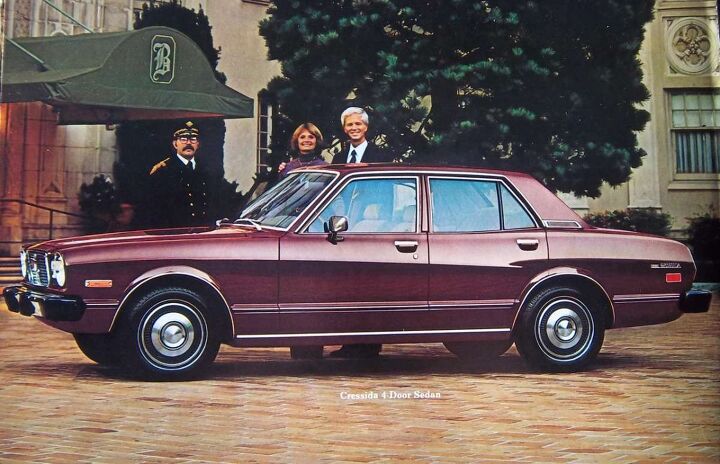

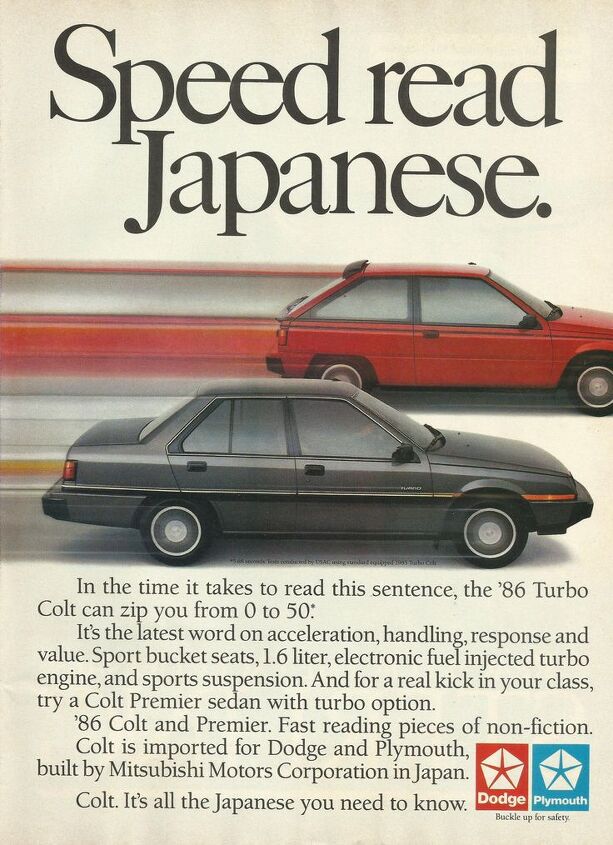
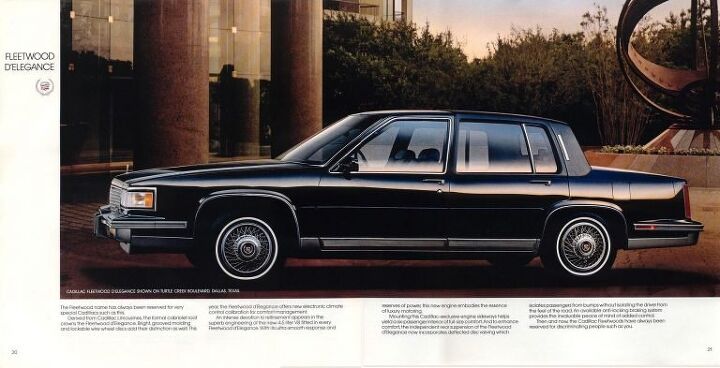

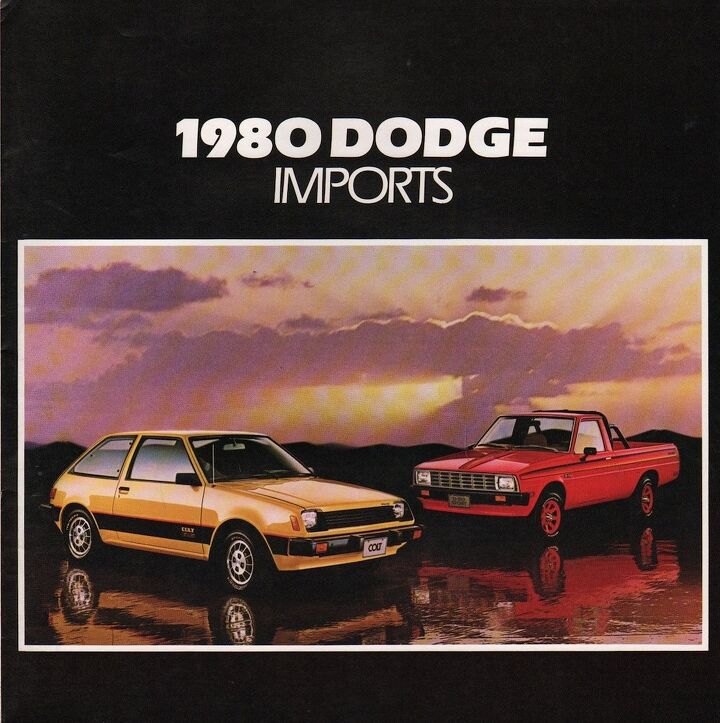
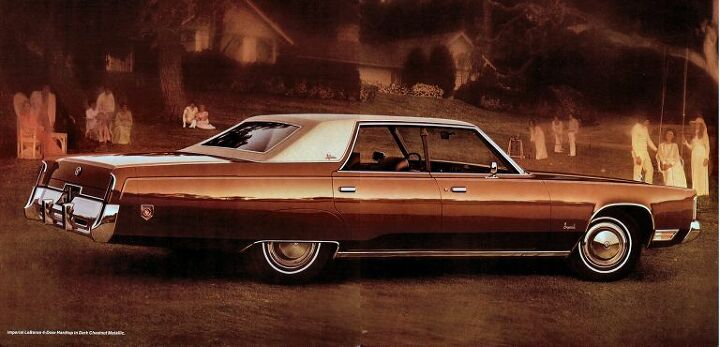

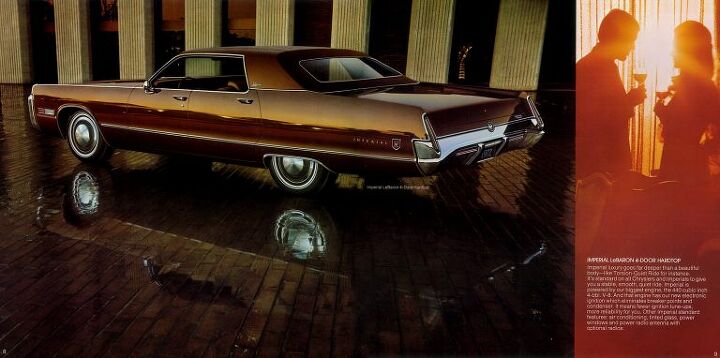
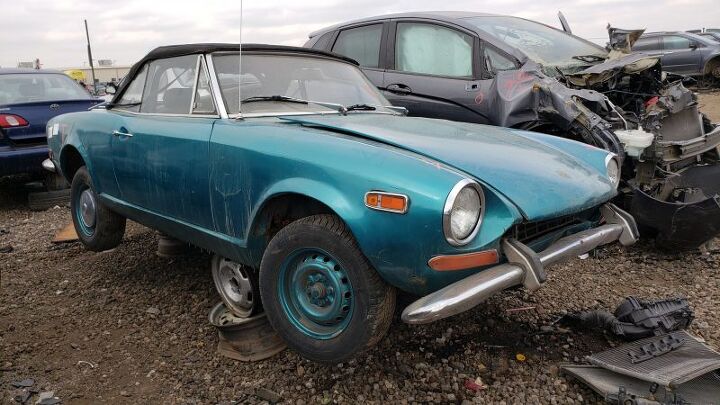
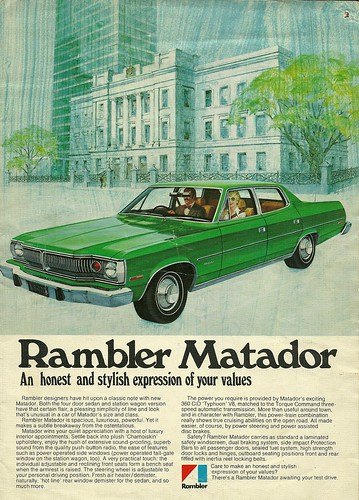

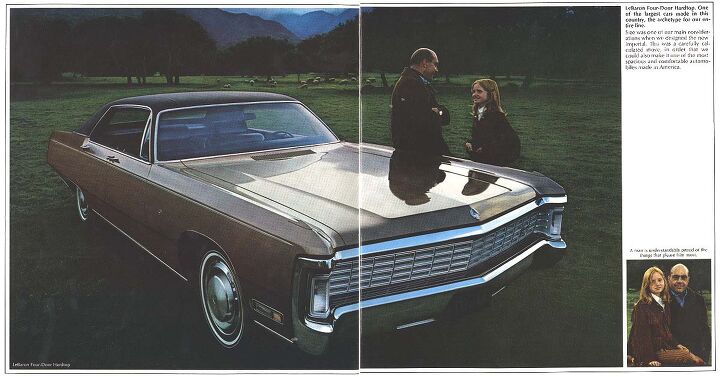
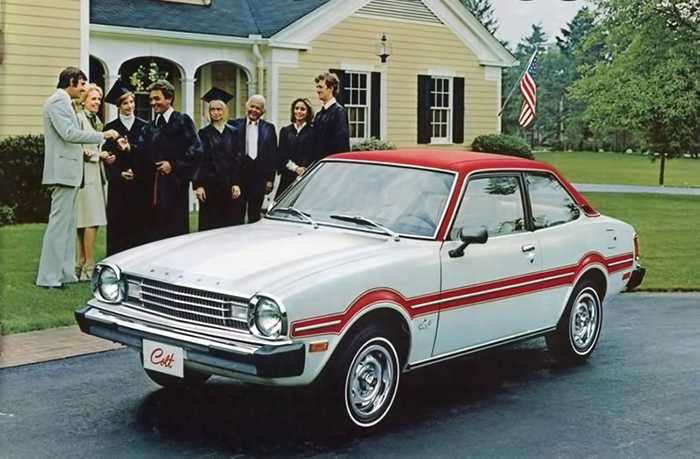












Recent Comments